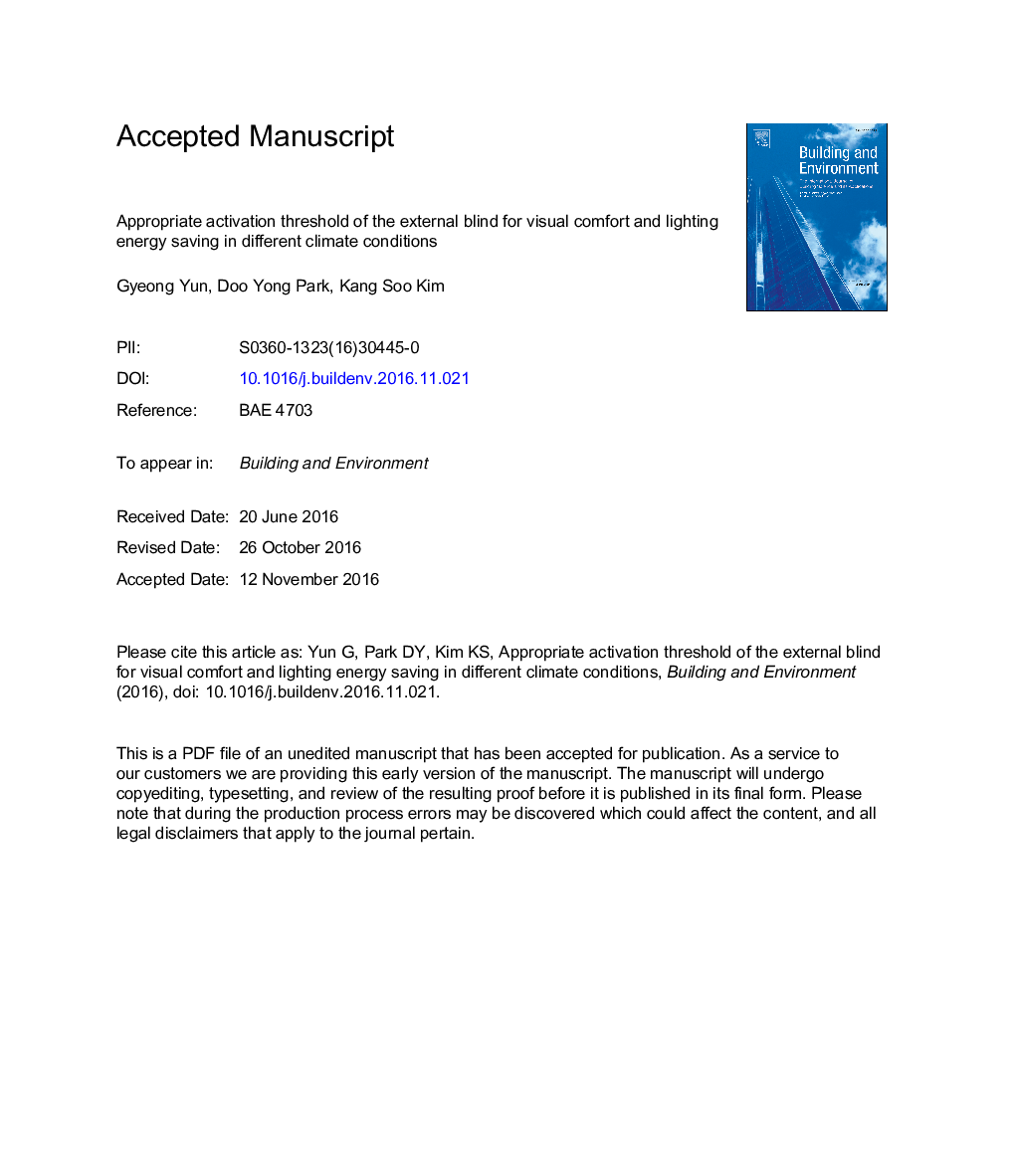| Article ID | Journal | Published Year | Pages | File Type |
|---|---|---|---|---|
| 4917365 | Building and Environment | 2017 | 54 Pages |
Abstract
A blind control method is important to reduce energy consumption and to provide comfort to the occupants. The objective of this research is to suggest how to determine the appropriate activation threshold and the slat angle of the external venetian blind for different situations. The variables are the climate condition, building orientation, WWR and control purpose (weighting factor). We used the Köppen-Geiger climate classification, and four regions including Singapore (A), Phoenix (B), Hamburg (C) and Inchon (D) were selected. The performance of the blind was evaluated based on the DGI (daylight glare index) and lighting energy demand [kWh]. The weighting factor was applied to each element according to its importance. The main conclusions are as follows: if we focused on the comfort factor, the slat angle of the blind is larger. If the load factor is more important, greater threshold irradiance is better. In the regions with a high irradiance level, the slat angle is larger than that in the other regions, and this tendency is pronounced in the south orientation. In addition to this, if the load factor is three times more important than the comfort factor, the result of evb_no (no blind) shows the best performance, especially in Singapore and Phoenix with a high irradiance level.
Related Topics
Physical Sciences and Engineering
Energy
Renewable Energy, Sustainability and the Environment
Authors
Gyeong Yun, Doo Yong Park, Kang Soo Kim,
